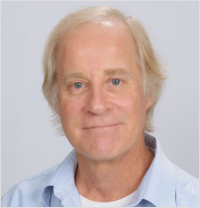GSOC's First Zoom Meeting!
Please join us for our first online technical talk in GSOC's efforts to adapt to current times!
Free for GSOC members
$5 for non-members
Note the different time: 2pm instead of 12pm
Factors in the Seismic Method that Distort Determination of Poisson's Ratio
Mark S. Egan
Consulting Geophysicist

Abstract
Perhaps a more descriptive title for this presentation would have been, “Why is it that even when the seismic data we have are of good quality, Poisson’s ratio values derived from those data don’t necessarily tie the wells?”. This was a question that was poised to me a few years ago by a major oil company. It was of serious concern in a high-profile, onshore field. I gave some opinions, and I did some limited analyses at that time.
Over the last few years I made a more concerted effort to investigate this. The causes I focused on were not the usual topics of noise, anisotropy, and imaging. Those already received much of the industry’s attention. Instead, I looked at the pitfalls of linear inversion, as well as pitfalls of ignoring the effects of “surface angle projections”. These latter effects refer to the angles at which seismic energy enters the earth at the source, and the angles at which the energy emerges at the receivers.
The methodology that was followed was to generate seismic gathers for 50 earth models that were constructed using well logs from all over the world. The true-amplitude gathers as well as the corresponding gathers that were perturbed by the angle effects alluded above were then inverted with linear and nonlinear inversion routines. The values of Poisson’s ratios that were then derived from the inverted results were compared with the true values. Successes and failures were then analyzed to determine the reasons why Poisson’s ratios are correctly computed in some seismic surveys, while not in others.
The findings will be discussed in the presentation. They impact everything from survey design to final inversion.
Biography
Mark Egan is a consulting geophysicist. He worked for Schlumberger and its heritage companies from 1975 to 2016, at which time he retired. Egan’s last position at Schlumberger was as global chief area geophysicist in the Land Unconventionals Group within the WesternGeco segment. His previous postings included chief geophysicist positions in North America, Saudi Arabia, Dubai, and London.
Egan holds a PhD degree in geophysics, an MS degree in acoustics, and a BS degree in physics and mathematics. He is a member of the SEG, the EAGE, the SPE, and various local societies. For several years, Egan has additionally been a member of the Editorial Committee for the Journal of Petroleum Technology – a publication of the SPE. He can be reached at egan9@hotmail.com.